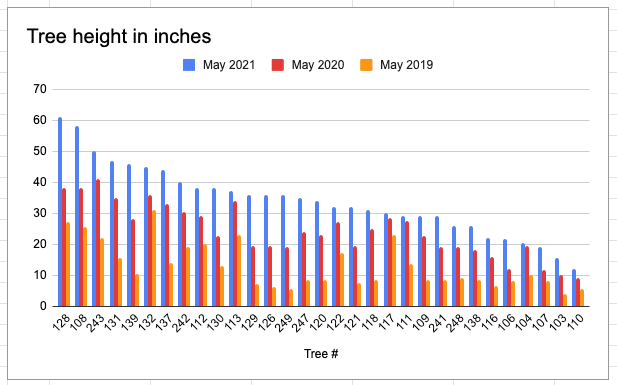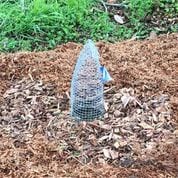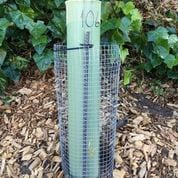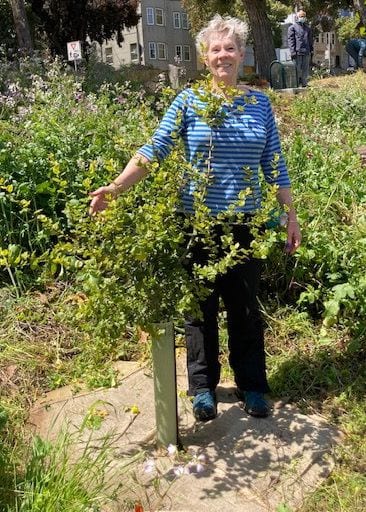The California oak woodland on the Glen Park Greenway is reaching new heights and the time has come for most of the young trees to be freed from their protective wire cages.
Each year, mainly during the month of March, coast live oaks like the ones planted along the Greenway put on a growth spurt. Astonishingly, about 90% of the annual increase in height happens in a single month! So we measure the trees every May to see how they’ve grown. As shown in the attached graph, the median height of the trees, planted as acorns in December 2017, is now about 32”. But some are doing much better than others: the tallest has now passed five feet while the shortest has reached only one foot! To support the trees that appear to be struggling, we will water them every four weeks through this summer. Let’s hope that the shorter ones can catch up.

Now that the trees are three years old they have started to produce lateral roots that grow horizontally outwards. These lateral roots pass through the mesh of the wire cages that have protected them since they were first planted. So this winter we removed the cages of all but the few trees that are developing most slowly. The trees without their protective cages, that extend at least six inches underground, now run the risk that a gopher or other creature will destroy their roots. However, this risk is offset by the greater danger that the trees would be severely damaged if removal of the cages were delayed until their lateral root system were much more developed.
You can admire the coast live oaks along the Greenway between Lippard and Burnside Avenues. They’re recognizable because each one is protected by a pale green plastic tube “tree-shelter”.

Acorns are sown in protective cages

opened and a tree shelter is secured over the seedling.

the tree shelter and the wire cage is carefully removed